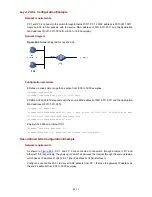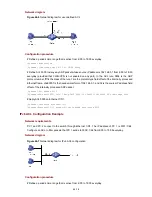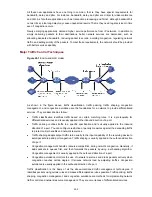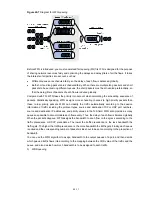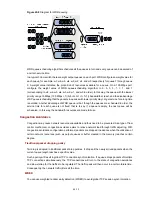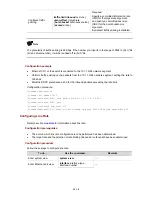
Figure 45-7
Diagram for WFQ queuing
Before WFQ is introduced, you must understand fair queuing (FQ) first. FQ is designed for the purpose
of sharing network resources fairly and optimizing the delays and delay jitters of all the flows. It takes
the interests of all parties into account, such as:
uled preferentially, so
rs of packets of each flow is reduced globally.
iority into account when calculating the scheduling sequence of
priority packets than
ng to the session
UDP port numbers,
also provide as many
is balanced globally.
ss according to the
ce is, the less bandwidth the
. Finally, each queue
ing to the proportion of
port, and then decide
e of the traffic and the
) WRR
queuing
z
Different queues are scheduled fairly, so the delay of each flow is balanced globally.
z
Both short and long packets are scheduled fairly. When there are multiple long packets and short
packets to be sent among different queues, the short packets must be sched
that the delay jitte
Compared with FQ, WFQ takes the pr
packets. Statistically speaking, WFQ assigns more scheduling chances to high
those to low priority packets. WFQ can classify the traffic automatically accordi
information of traffic including the protocol types, source and destination TCP or
source and destination IP addresses, and priority values in the ToS field. WFQ
queues as possible to accommodate each flow evenly. Thus, the delay of each flow
When the packets dequeue, WFQ assigns the bandwidth to each flow on the egre
traffic precedence or DSCP precedence. The lower the traffic preceden
traffic gets. The higher the traffic precedence is, the more bandwidth the traffic gets
is polled and the corresponding number of packets is taken out to be sent accord
bandwidth.
You can use the WFQ algorithm to assign bandwidth to the output queues of a
which queue a traffic flows into according to the mapping between the COS valu
queue, and also deicide how much bandwidth is to be assigned to each traffic.
3
45-11


